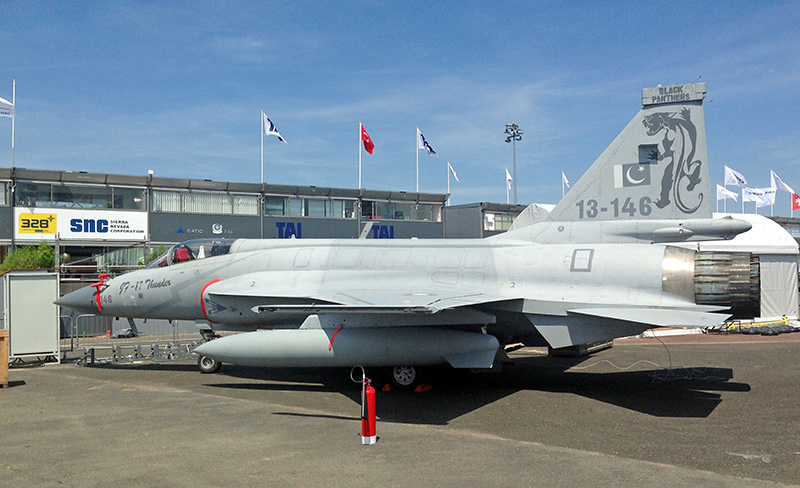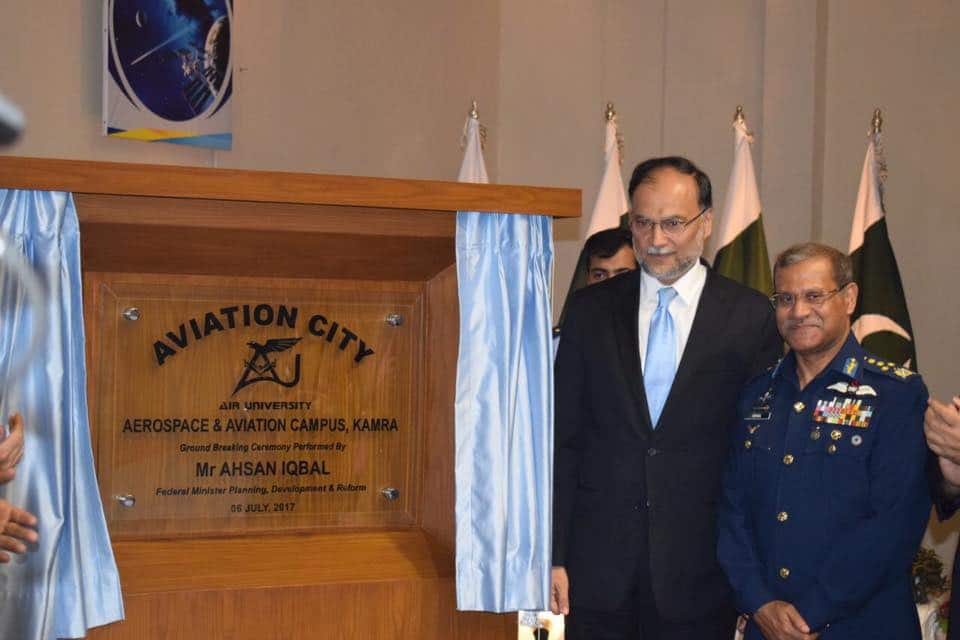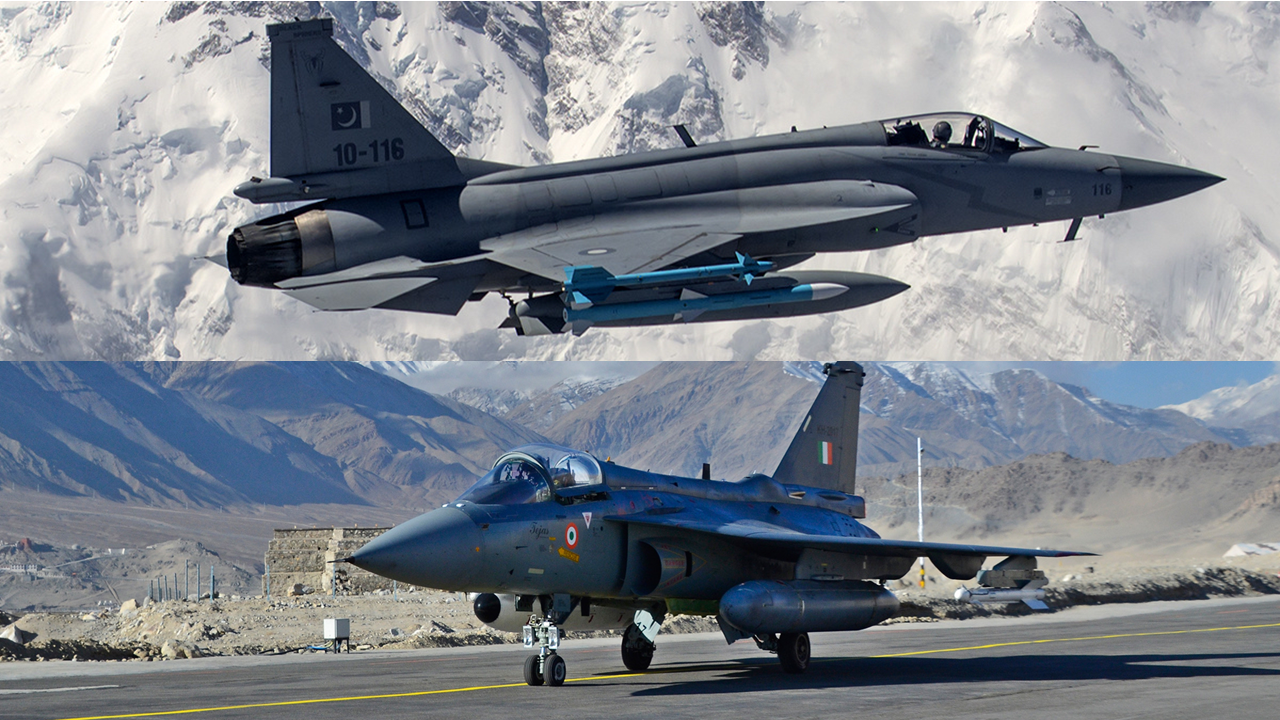2235Views 24Comments

Discussion: With KLJ-7A, could an AESA radar-equipped JF-17 come sooner?
Foreword: This is not a news story, but a piece for discussion. The details offered in this article are not authoritative pieces of information, but rather, perspectives of the author.
The recent unveiling of the Nanjing Research Institute of Electronics Technology (NRIET) KLJ-7A active electronically-scanned array (AESA) radar at Air Show China 2016 has offered a substantive indication of China’s progress in developing contemporary electronics subsystems. It has also given a tangible look at what the JF-17 Block-III, the first major iterative update of the JF-17 Thunder multi-role fighter program, could include, at least in terms of an AESA radar (which is planned for that variant).
AESA radars are increasingly common in modern fighter platforms. An AESA radar system is essentially an amalgamation of many – hundreds and, in some cases, more than 1,000 – transmit/receive or transceiver modules (TRM). One can think of a TRM as a small milk-carton-sized radar that emits its own unique signal. In contrast to preceding pulse-Doppler radars, which would transmit one different signal per pulse, an AESA radar can transmit multiple different signals per pulse. This process makes it difficult for electronic warfare (EW) systems, such as radar warning receivers (RWR) or active jammers, to isolate a specific signal for re-transmission (to confuse the pulsing radar). In effect, an AESA radar has a higher level of electronic counter-countermeasures (ECCM) capability.
This would be a very important addition to the Pakistan Air Force (PAF), not just in terms of the JF-17, but its fighter fleet in general – especially units that are envisaged for use against enemy assets, which will be equipped with a wide range of quality EW and electronic countermeasures (ECM) capabilities. For the PAF, the JF-17 has already emerged as an indispensable platform. Not only is it a multi-role system equipped with tactical data-link (TDL) connectivity and compatible with a beyond-visual-range air-to-air missile (BVRAAM), but it is a platform that the PAF can control and configure based on its will.
Moreover, the JF-17 is backed by a domestic support network, which better guarantees a reliable and timely source for spare parts, repairs and depot-level support. In this vein, the availability of an actual AESA radar – i.e. KLJ-7A – is an exciting prospect for the PAF. As per an NRIET technical manager, the KLJ-7A uses more than 1,000 TRMs and is capable of tracking 15 targets aerial targets and simultaneously engage four of them. The KLJ-7A can track a fighter-sized target 170 km away (East Pendulum).
That said, the availability of the KLJ-7A alters what we had expected of the PAF’s modernization plans, especially in regards to the JF-17. Put another way, the KLJ-7A could be an indication that an AESA radar-equipped JF-17 could come sooner than the JF-17 Block-III. One will have noticed that the previous sentence differentiates between a JF-17 equipped with an AESA radar and the JF-17 Block-III. The reason for this is that the KLJ-7A could plausibly make its way to existing JF-17 Block-I and/or Block-II airframes before the JF-17 Block-III rolls off the production line.
Granted, there are several caveats. First, the KLJ-7A may not be as close to availability as believed by this author. Second, an upgraded JF-17 Block-I or Block-II could be the basis of the JF-17 Block-III. These are both plausible scenarios, but if the KLJ-7A is ready for production before the completion of the JF-17 Block-II’s production run, then the PAF could have an opportunity to upgrade the Block-II platform ahead of the JF-17 Block-III. This scenario could enable the PAF to field an AESA radar-equipped JF-17 before 2020.
There is a rationale for this course. The PAF had pursued (and may still be pursuing) an off-the-shelf fighter platform to serve as a stopgap before it could field a sizable JF-17 Block-III fleet, which would likely happen in the mid-2020s. However, there are limitations. First, and in the best-case scenario, the PAF may only have two or so AESA radar-equipped fighter squadrons (inducting a distinct platform is a fiscally and time-consuming process). Second, the cost could simply prevent the PAF from pursuing this route at all. It is not clear where that effort stands at this moment, but in lieu – or even in tandem – of it the PAF could upgrade its qualitative element in relatively short-order through a pre-Block-III upgrade (read: Block-II Plus?).
The prospect of upgrading the JF-17 Block-II will depend on the complexity involved with integrating the KLJ-7A to the current production airframe. Aesthetically, the KLJ-7A does not appear to be significantly different in terms of dimensions or footprint to the KLJ-7 or KLJ-7V2, which are currently used on the JF-17 Block-I and Block-II, respectively. The designation of the AESA radar seems to suggest that NRIET had been aiming for seamless integration, if not a level of commonality between components.
On the other hand, expediting the integration of an AESA radar could be a suboptimal solution. This may sound disingenuous if examined considering an AESA radar’s ECCM benefits, but the PAF could genuinely require the extra time to integrate an AESA radar with the JF-17 Block-III’s onboard EW and ECM suite. If given sufficient financial and time investment, the JF-17 could be configured to utilize its radar for jamming and EW/ECM suites (if based on AESA TRMs) for target detection and identification. Granted, a ‘JF-17 Block-II Plus’ would be suboptimal in comparison to the JF-17 Block-III, which could potentially benefit from subsystem fusion.



24 Comments
by GhalibKabir
What about the need for a more powerful engine, the RD-33 is a bloody smokestack and with an AESA will the -17 not need more power?
by MarvellousThunder
RD-33 is not in use by thunder but right now new thunders are using WS-13 smokeless with better thrust
by AhmAd IbrAhim
Powering AESA is not the issue even with current RD93, issue was about cooling mechanism which is now resolved.
As per plan, AESA will find its way in Block 3 first then Block 2 and in the end Block 1 but schedules & plans can be updated defending upon availability of system.
AESA in Jf17 before Blk3 is not according to plans but considering KLJ7A being an AESA version of pulse Doppler KLJ7V its integration in Aircraft is an easy & less time consuming job. Hence comes up the possibility of introducing it in Blk2 which will be produced in 2017-18 instead of waiting for 2019-20.
by Muhammad Anas Khan
Which ENGINE PAF INSTALL on JF-17 THUNDER??????
Any NEWS about WS-13A?????
BILAL KHAN???????
by MarvellousThunder
i also have one more route for paf bilal.
If PAF upgrades at least 3 squadrons of thunder to AESA then also get an off the shelf platform for stop gap and then take time for block lll til 2024 and convert it into an MMRCA , this would also be beneficial
by Sami Shahid
Long Range Targeting Pods , AESA radar , Helmet Mounted Display and Dual seat version all is good but PAC should install a MACH 1.8 engine on JF-17 and let it be a Russian engine or Chinese 🙂
by Navid Butt
…..and would ws-13A be produced under licence in Pakistan?.
by MT
if it were really so easy to integrate a new radar in existing aircraft then Russians won’t be struggling with aesa for last decade.
their first aesa aircraft in mig35 is stil not stable.
irrespective of the hubris chinese aesa technology capabilities is still big question mark.some call it copy of elta2052 which tracks 64 target at time as compared to 16 for kjl a
anyway cooling the radar ll require much more powerful engine.
is paf ready to fit aesa in rd93 jf17 block1/2
paf ll know pros and cons of using aesa with that substandard engine.
Give Hal also feels that aesa version ll require major redesign with frame and weigh reduction despite seeing tejas with better ITR,STR and thrust to weight ratio than jf17
not sure if pak are inducting jf17 for sake of pride bcoz jf basic flying performance not at par with any f16 variant
by MT
cooling mechanism requires to seek significant power from engine.
chinese aesa tech s barely3-4yr old as compared to decade experience of elta which r finding It tough in integration with tejas bcoz of power drainage issues leading to detoriation of aircraft performance
by MT
not true
by Abdul Rashid
This article does help address some of the speculation on many minds, namely the possibility of an AESA radar on earlier Blocks. The shape, dimensions of the new radar might be similar to KLJ-7/V2 but if this is only gauging by available photos then the new radar unit looks a bulky piece of kit – might be significantly heavier than the KLJ-7/V2. Also, as others are pointing out, the successful integration issues might be a showstopper in the shorter term with requirements for a lighter airframe and a more powerful engine to begin with. On the other hand if, as speculated, the KLJ-7A has been designed from the onset to be integrated on to the JF-17 then it is probable the Chinese have also been busy working on addressing some of the related integration issues. Hopefully the integration will not require too much change. If it does then the we might not see until the Jf-17 III is ready.
by kash
with the biggest piece of puzzle (aesa radar) in place I think the block lll is going surface soon than presumed
by MT
how many j10B series aircraft have working aesa in place
4-5 probably at max
The reason is simple that chines aesa tech is not matured and chinese trust pesa radar over their 1-2nd gen aesa technology compared to 3-4th aesa technology of israeli and usa
by Bilal Khan - Quwa
The PLAAF was operating the squadron strength J-10B units in 2015, and it had been testing an AESA radar onboard the J-10B since 2014. In both cases, these are the earliest known instances of outside observers being aware – in other words, both were happening for a time before. Sure, let’s say they haven’t yet begun to deploy AESA radars onboard their fighters, fair – but this idea that they are not ready or at least close to being ready to do so needs qualification.
If you’re not sure then just say you’re not sure. No need to fill in gaps in facts with speculation.
by MT
The radar KLJ7-A in picture is alleged to draw 5KWT of energy from small antenna.
Its 1st attempt of development for Chinese AESA,something which Israel did in 2005.
Since the technology is developed incremental. Israeli F16 continue to use Amrican radar while their own technology have evolved lot ahead in last 1 decade.
by kash
dont know about ws13a but here is some news about ws13e
https://www.google.com.pk/amp/s/tiananmenstremendousachievements.wordpress.com/2016/07/02/successful-test-flight-of-chinas-j-31-with-new-powerful-ws-13e-engine/amp/
by kash
https://www.google.com.pk/amp/s/tiananmenstremendousachievements.wordpress.com/2016/07/02/successful-test-flight-of-chinas-j-31-with-new-powerful-ws-13e-engine/amp/
by kash
we ll find out soon enough…IshAllah
by Saad Ghafoor
One step at a time mate . . one step at a time. Need better avionics more than a mach2+. No one is racing with another plane, only ground attack and reconnaissance as primary roles of this aircraft. Intercepting comes later. Pakistan has F-7 and F-16 (single seaters) as interceptors.
by Saad Ghafoor
It is not required as I am told by a reasonably trustworthy source. The squadrons that operate JF-17s right now are part of squadrons that have ground attack responsibilities and are stationed in bases that are not primarily used for interception. PAF has F-7 and F-16 single seaters as well as a few Mirage 5 ROSEIII as interceptors. JF-17 is replacing F-7 only in close ground support and attack roles. The existing speed is suitable for ground attack.
by Sami Shahid
JF-17 is a multi role fighter aircraft and it can perform any sort of mission. Let it be interception, ground attack or air-to-air combat. JF-17 is an alternate of F-7’s and Mirage 5’s but as it has latest technology it can even replace F-16’s if we produce JF-17’s in huge numbers and keep upgrading it. AESA radar , HMD’s and long range targeting pods are very important for JF-17’s. Yes your information is correct to some extent as JF-17’s were mainly produced and developed for Counter-Terrorism and Counter Insurgency.
by Dodo
No, JF-17 currently use RD-93 made in Russia. China does offer its own WS series engines but Pakistan Air Force picks RD-93.
by Dodo
I think the significance of KLJ-7A could summarize as:
1. Not just for block 3 JF-17, all existing JF-17 can quickly upgrade (currently use KLJ-7, KLJ-7V2 all made by the same manufacturer of KLJ-7A). Not just software upgrade could be done in short period, hardware retrofit should also be quick.
2. Make JF-17 more appealing in international market, especially against second hand F-16 (no AESA, upgrade cost more than buy a new JF-17)
3. India might be driven to upgrade all its SU-30MKI and MK1 Tejas (83 to be built). To quickly obtain AESA than currently planned, more $$$$$$$$$!
by Dodo
Despite JF-17 is very cheap, current international fighter jet buyers, like Americans, are “M” shaped. Rich nations want to buy top tier second to none fighter jets; poor nations don’t even have money to buy JF-17. Nigeria could only buy 3, yes three, JF-17 this year.
How to convince nations have money to buy, say 60 JF-17 instead of 10 Rafale, is key for JF-17 to open up market. Equipped with KLJ-7A without significant price increase or even at the same price could be one convincing point.